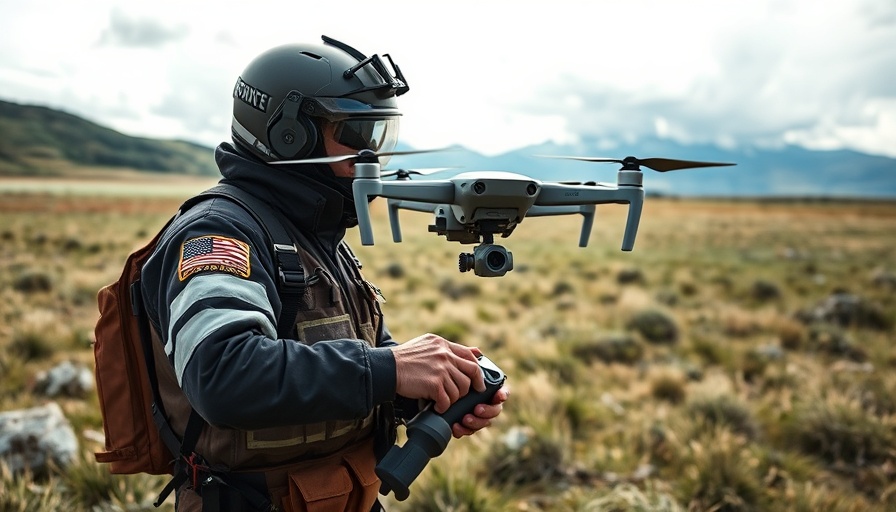
Anticipating the Drone Revolution Among First Responders
A recent survey conducted by Verizon's Frontline program reveals a seismic shift in the way first responders visualize their operations over the next five years. With nearly 50% of respondents believing that drones will be integrated into daily workflows, the perspective on drones is evolving from a specialized tool for exceptional scenarios to a fundamental component of public safety practices.
The Current Landscape of Drone Use
Only 15% of first responders are currently deploying drones or robots every day, but their anticipated growth to 48% underscores the potential shift in operational methods. Drones can efficiently operate in hazardous or difficult-to-reach environments and can provide real-time data that significantly enhances decision-making during emergencies. This change reflects both an acknowledgment of environmental challenges facing public safety and a burgeoning belief in the technology’s capabilities.
Technological Advances Driving Change
The report indicates that easing FAA regulations will further expedite this adoption. Benefits from expanded permissions, particularly relaxed visual line of sight requirements, may unlock new opportunities for drone usage in urgent situations where milliseconds matter. However, technical issues like battery life and overall reliability, especially in extreme conditions, continue to pose challenges that must be addressed as this technology becomes more ubiquitous.
Communication Infrastructure and Cybersecurity Measures
Reliable communication systems are vital for enabling optimal drone performance. First responders emphasize the need for uninterrupted connectivity to ensure video feeds and telemetry data can be transmitted without lag. Already, many agencies are investing in communications infrastructure to not only support daily operations but also enhance coverage during emergencies.
An equally pressing concern is cybersecurity. Recent findings suggest that two-thirds of agencies have taken steps to fortify their digital defenses against potential threats stemming from drone data transactions. This precaution highlights the recognition that technology can pose risks if not adequately protected, increasing the importance of integrating robust cybersecurity protocols into everyday drone operations.
Looking Ahead: Obstacles and Considerations
As public safety agencies gear up for the widespread integration of drones, several factors warrant attention. Agencies are grappling with budgetary constraints while trying to balance the high costs of training and equipment purchases against the potential benefits that drones can provide. Additionally, issues like standardization across different drone models and the seamless integration of these systems into existing emergency protocols are crucial for effective deployment.
Public Acceptance and Regulatory Compliance
Although technological advancements are encouraging, challenges remain outside the technological domain. Public concerns regarding privacy, noise pollution, and airspace safety could influence the speed at which agencies deploy drones more broadly. Engaging with communities to ease apprehensions and build trust will be essential for successful integration.
In summary, the evidence presented in Verizon’s Frontline survey signifies a shift that has the potential to transform the landscape of public safety operations. As drones become a standard tool for first responders, addressing both technical and societal challenges will be pivotal to harnessing their full potential.
For readers interested in the future trajectory of technology in emergency response, keeping abreast of these trends is vital. The advancement of drone technology not only impacts operational efficiencies but also shapes the future of public safety protocol and community engagement.
 Add Row
Add Row  Add
Add 




Write A Comment